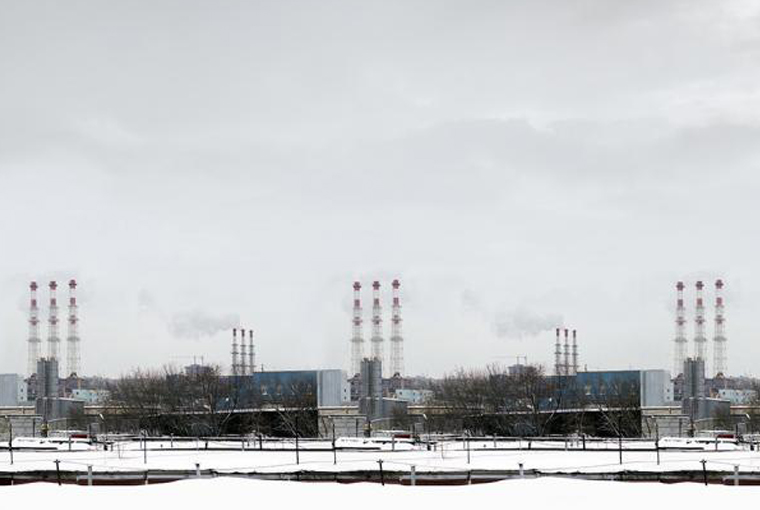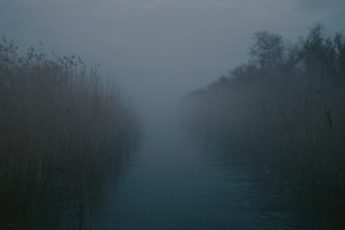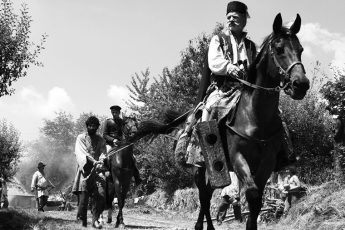
Last month, we launched our 2015 regional focus on the South Caucasus with a briefing on film politics and recent developments in the region’s cinematic landscape. This month’s editorial looks at the main off-screen problems that documentary filmmakers recognize in the region.
If one approaches the South Caucasus from the perspective of cinema, the Golden days of the region are long gone. Though Georgia is celebrating the emergence of a new cinematic movement, that development is as yet crumbly – the 65th Berlinale (February 5-15) saw no Georgian film featured in the official selection (the same goes for Azerbaijan and Armenia), with the country’s cultural pride still much more focused on the 60s when Georgian cinema witnessed a New Wave comparable to that of other European countries. Armenia, too, can look back at a rich cinematic history mainly due to the work of Sergey Paradjanov. While Azerbaijan does not fit that narrative, it neither contradicts it, for Azerbaijan’s cinema was no more prominent in the past than it is today.
If one leaves behind the cinematic perspective, things become more difficult to contrast. Soviet nostalgia is still widespread in Armenia, Azerbaijan and Georgia (home to Stalin, whose hometown Gori still houses many of his hardcore fans), and indeed many people lived better back in Soviet times than they do today – especially in Georgia, reportedly a small haven inside the Union. Armenia’s dependence on Moscow in turn has not diminished by a notch, while the Azerbaijani regime uses repressive measures highly reminiscent of Soviet times even today (graphic footage of anti-government protests being broken down – viewing only at your discretion – available here). Still, the most important factor that inspires nostalgia today is the rough transition that South Caucasian nations went through after gaining independence. Economic hardship was flanked by the outburst of ethnic and national conflicts that had been conserved, but never resolved by Soviet authorities and are now largely frozen. It is fitting, then, that Tamara Stepanyan’s Embers (2012; Armenia, Lebanon, Qatar) and Eileen Hofer’s He Was a Giant With Brown Eyes (2012; Switzerland, Azerbaijan) approach the present through the past, depicting Soviet nostalgia and adumbrating (if not always intentionally) how many of the problems that motivate people to pine for good old times were in fact caused by those very times.
Stepanyan interviews a group of friends her late grandmother belonged to, depicting how Armenians were forced to readjust their world view to ever-changing political and social contexts – not always successfully. Embers reveals deep generational divides: where the friends of her grandmother laud the Soviet authorities for building homogenous cityscapes and pursuing a social agenda, Stepanyan addresses the time’s elitism and hypocrisy (Soviet-time elitism was surprisingly prevalent in the region indeed, which manifested itself both structurally and by way of the shadow economy). Hofer in turn follows Sabina, a young girl who travels to her home country to rejoin her dad, a military general who used to serve in the Soviet army (the film is discussed at greater length in our current issue). Sabina left Azerbaijan for Switzerland together with her mother after her parents had divorced and now wants to return. The fact that her sister – who stayed behind – says she would much prefer living with their mother in Switzerland suggests that neither their repressive home country, nor Sabina’s ostensibly idyllic adopted home are able to meet all of their ideological and emotional demands.
That Azerbaijan is not the country its huge PR machine promises it to be is the main idea behind Amazing Azerbaijan! (2012; UK), a satirical documentary by London-based director Liz Mermin. The film is particularly interesting since it stars Khadija Ismayilova, an investigative journalist (Radio Free Europe / Radio Liberty) who is currently in prison on charges of incitement to suicide in spite of heavy criticism from both NGOs and the European Union. The hypocrisy of the EU’s misgivings is forcefully captured by Mermin: Azerbaijan’s long tradition of human rights abuses has not deterred the EU from keeping strong ties with the country, which is heavy on energy resources (especially oil). Ismaiylova had previously been blackmailed with horrid techniques and recently warned that she would possibly soon be arrested.
The fact that Amazing Azerbaijan! is a UK-production directed by a non-Azerbaijani is also revealing: which Azerbaijani director would dare to make a film about the regime’s repressive methods? Making a film (even if it features much TV footage) as a foreigner who is only temporarily visiting Azerbaijan is a whole different story from voicing dissent from within. Of course, South Caucasians don’t only leave the region for political reasons. Levan Koguashvili’s Women From Georgia (2009; Georgia, USA) is a sensitive portrait of Georgian wives and family mothers who have moved to the US on their own to earn money for their families back in Georgia. Their strikingly open laments about their harsh living conditions and (illegal) work situation reveal both Koguashvili’s talents as a documentary filmmaker and how the evil-father-stereotype that permeates Georgian contemporary films is not far from being real: many of the women’s men are lazy slackers or alcoholics who simply don’t feel like working. Looking at the patriarchal structures in Armenia and especially Azerbaijan, the film could probably also have been made about women from those two countries.
Davit Stepanyan’s Pretty girl, why have you come, do you want to do my job? (2013; Armeia) follows the struggle of the Occupy Teghut movement to preserve a mountainous region threatened by plans to set up mining facilities. The film not only points to the precarious prevalence of ecological problems in Armenia (and Azerbaijan and Georgia). It also illustrates the difficult reality civil initiatives are facing in a region where people lack faith in participatory democracy and the interests of governments and private companies are extraordinarily homologous. Worse yet, this phasing of interests doesn’t seem to visibly reflect in the life standards of the local population – on the contrary. In Stepanyan’s film, local villagers are at risk of being displaced due to the mining plans, a bleak outlook also faced by many people in Azerbaijan. The Leader Is Always Right (2010; Georgia) suggests that the relative lack of civil society in the region is in part due to structural reasons. The 43-minute film was filmed at a state-financed youth camp in Georgia and offers an impressively revealing account of the way nationalism and civil obedience are fostered even among the youngest. Anti-Russian and pro-Georgian slogans and songs dominate the everyday routine of children visiting these so-called “patriotic camps”, where team leaders enforce military-style discipline and skeptical children are manipulated into thinking over their misgivings. The fact that the change of government in 2012 led to an immediate discontinuation of the program, indicates that it may have served the party interests of Mikheil Saakasvhili’s National Movement more than those of the state (even on a nationalistic understanding of the latter). A speaker at the camp claims that a nation which only thinks about social problems will never be able to work together for a better future, a notion which reflects the National Movement’s liberal rhetoric. Director Salomé Jashi is among the strongest contemporary documentary filmmakers from the region, time and again having managed to reveal economic, political and social problems in Georgia that demand different degrees of subtlety and explicitness.
Where fiction directors quickly seem to converge in search of a common style and language – a global tendency – documentarists are forced to work with what they have. In the South Caucasus, that has led to many laudable approaches that receive disproportionately little attention given how quickly a fiction film about economic, political or social problems can hope to be selected at an international film festival (regardless of its aesthetic quality). Those who wish to look behind the façade will often have to dig deeper – a challenge worth pursuing.
***
This month we reported from the Berlinale and continue our regional focus on the South Caucasus with two Azerbaijani documentaries, both on the theme of generational conflicts, Eileen Hofer’s He Was a Giant with Brown Eyes and Rodion Ismailov’s My Kith and Kin. Julia Zelman saw Armenian Harutyun Khachatryan’s latest feature Endless Return, Eternal Return that reflects on questions of national identity in the life of Armenian exiles. We are also happy to introduce two new Polish contributors to EEFB. Emilia Sieczka and Radoslaw Szymanski analyze the political meaning of Pawlikowski’s Ida. Likewise on Poland is Colette de Castro’s comparative review of Jan Komasa’s Warsaw ’44 and Warsaw Uprising. Finally, this issue features our first review of a majorly Albanian film. Ana Ana Grgić saw Bota, an Albanian-Italian-Kosovar production, and interviewed the directors of the film.
Konstanty Kuzma & Moritz Pfeifer
Editors




Leave a Comment